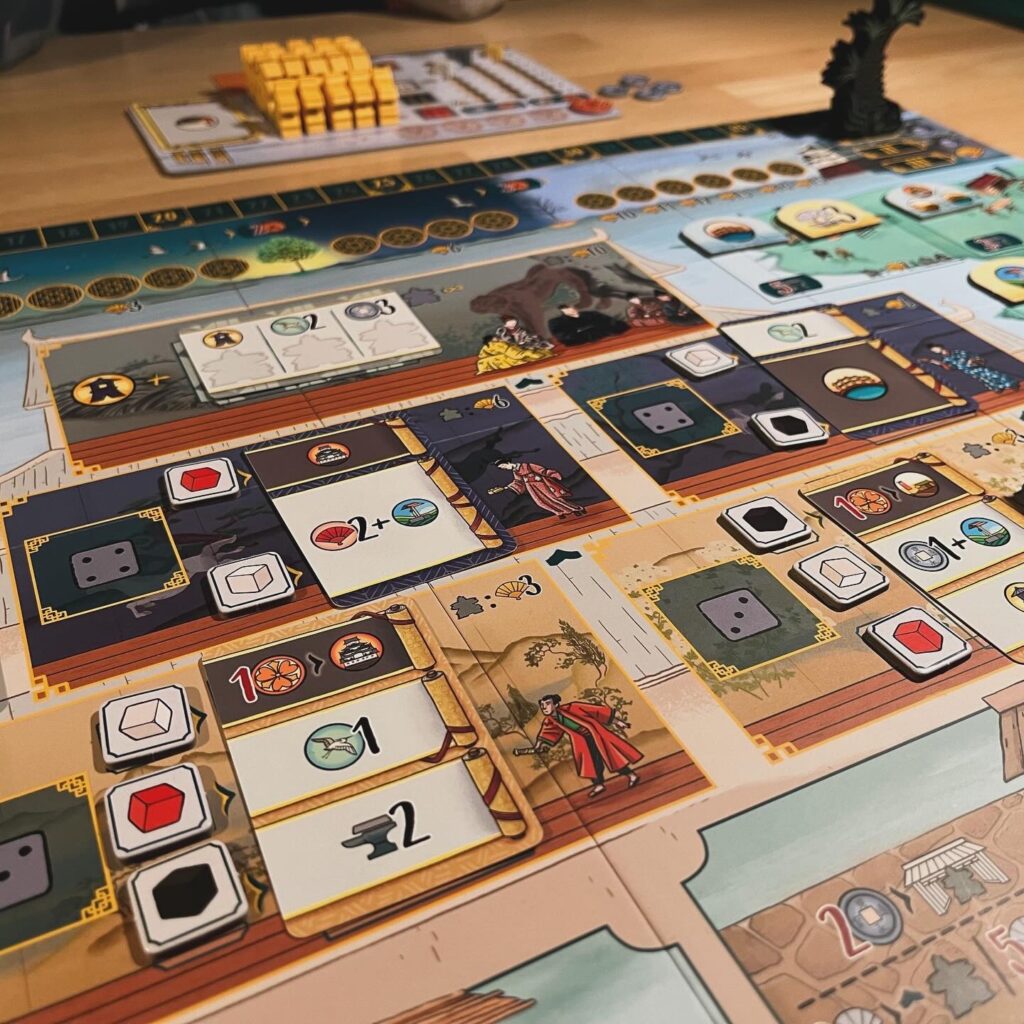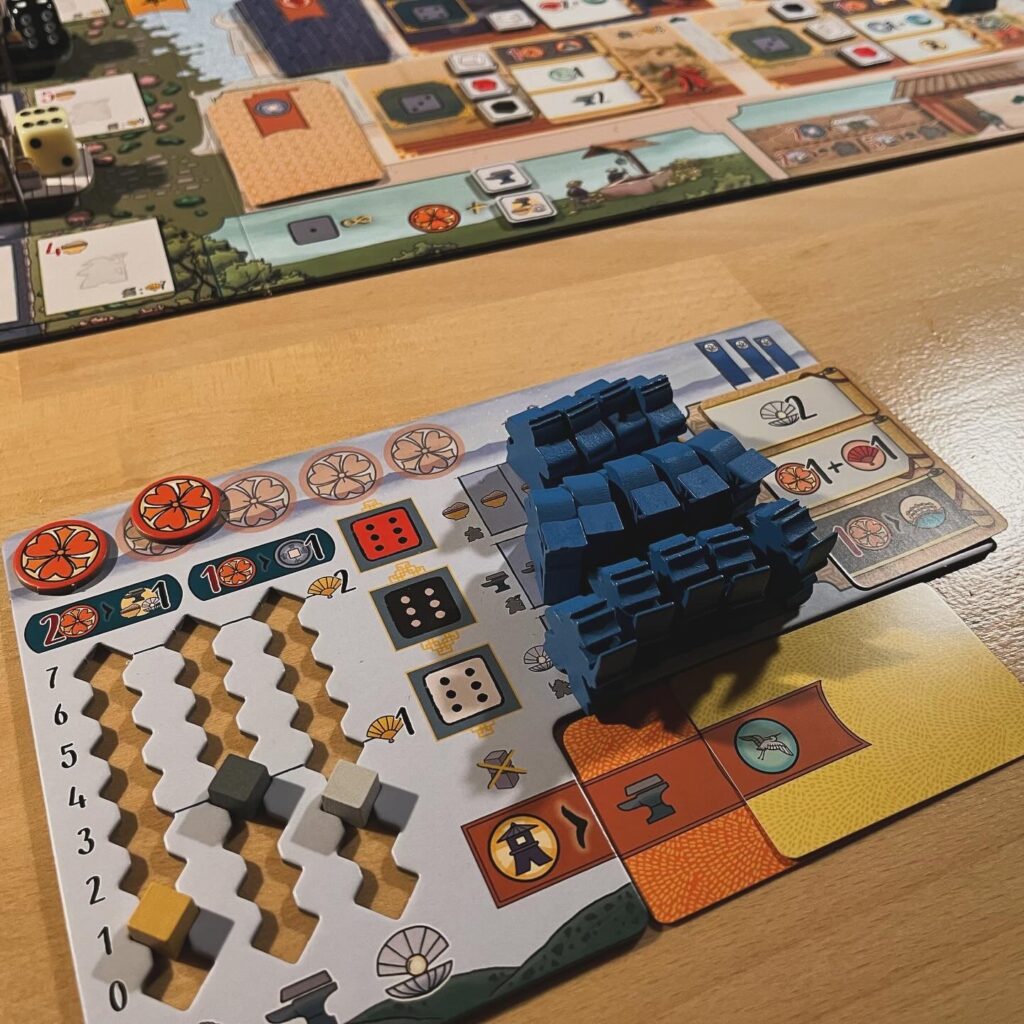The title The White Castle does not refer to the American burger restaurant where stoners such as Harold and Kumar like to be seen, but refers to Himeji Castle: a magnificent castle located on a hill in the middle of the Japanese city of Himeji. An illustrative example of classic Japanese architecture, this distinctive castle is called – naturally – the White Castle because of its sharp white colors. The castle is also called the White Heron Castle because its architecture is said to resemble a heron taking flight and, in addition to the white walls, the castle’s roofs have an elegant gray color: just like a heron with its dark gray crest. With your clan of courtiers, farmers and samurai, try to gain the most influence and prestige in The White Castle!
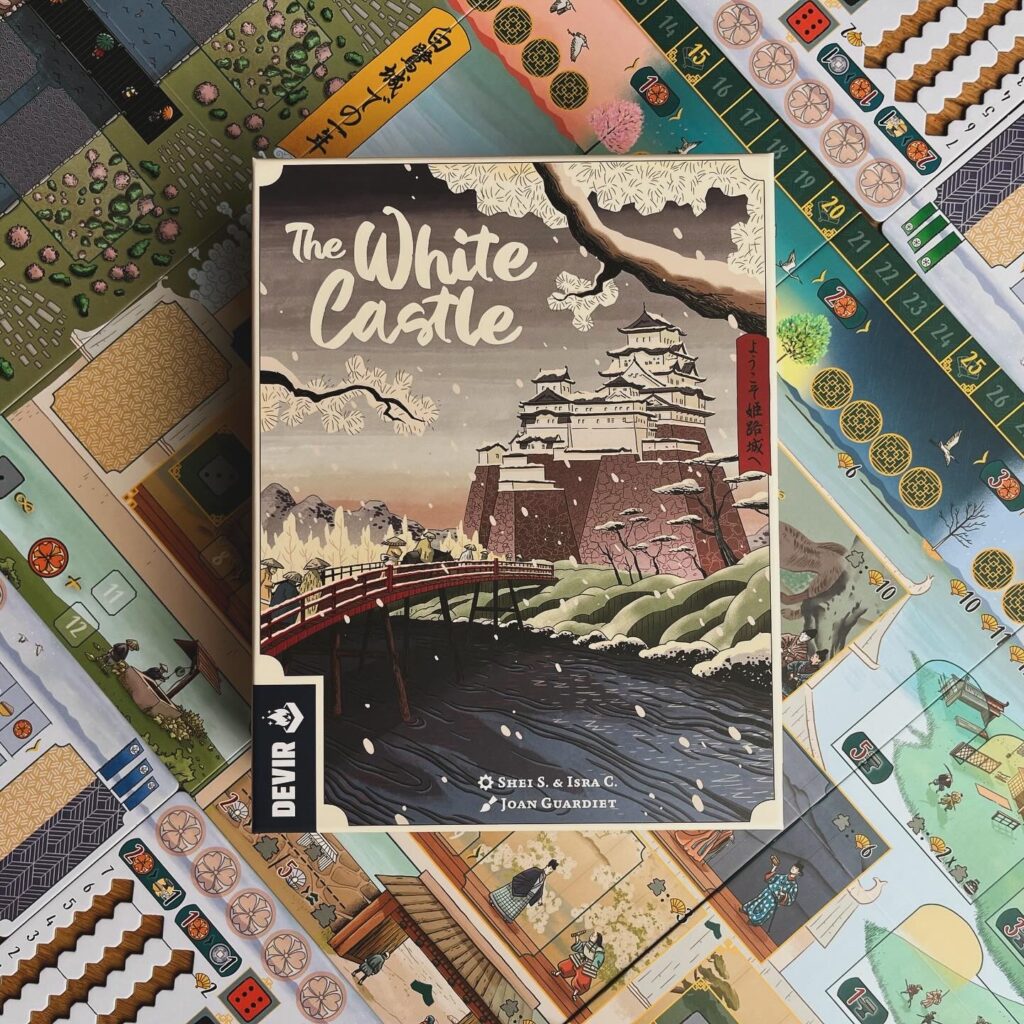
Background
The White Castle is the spiritual successor to The Red Cathedral. In The Red Cathedral, the Cathedral of the Intercession of the Most Holy Theotokos on the Moat (in short St. Basil’s Cathedral) took the center stage, and players were tasked with building this distinctive cathedral in its red color. As in The Red Cathedral, in The White Castle an imposing building is central as the setting of the game, but in both games dice also play an important role. Otherwise, they are stand-alone games that mainly share a thematic link, and we can’t wait for any new installment in this series. In The White Castle, players will use dice from a shared pool to gain influence and victory points at the court of the castle in Himeji.
Setup
The White Castle is a wonderfully varied game and this means that the game setup has some steps that make for a varied setup. Players set up the game board and place the bridges in the appropriate places. On the different spaces in the garden, players place cards, in the castle they place different dice tiles and in the training spaces they place some half-rounded bonus tiles. There are multiple cards and tiles and many possible combinations, so each game will be slightly different. Place players’ markers to keep track of victory points and markers to keep track of influence at the designated spots and place the herons in the different player colors in the same order as players’ influence. With the herons, players keep track of the turn order.
The different stacks of cards are shuffled and placed in the castle. Each player sets up his own player board with playing pieces. Pairs of starting cards are placed face up on the table. Each player chooses a set to determine his starting position with resources and personal actions and bonuses. Depending on the number of players, an amount of dice of each color are rolled. The dice are placed on the corresponding bridges from high to low. Players are ready to send out their peasants, court envoys and samurai to earn the most victory points.
Gameplay
A total of three rounds are played and during each round each player uses a total of three dice. Once a total of only three dice remain on the bridges, a round is over.
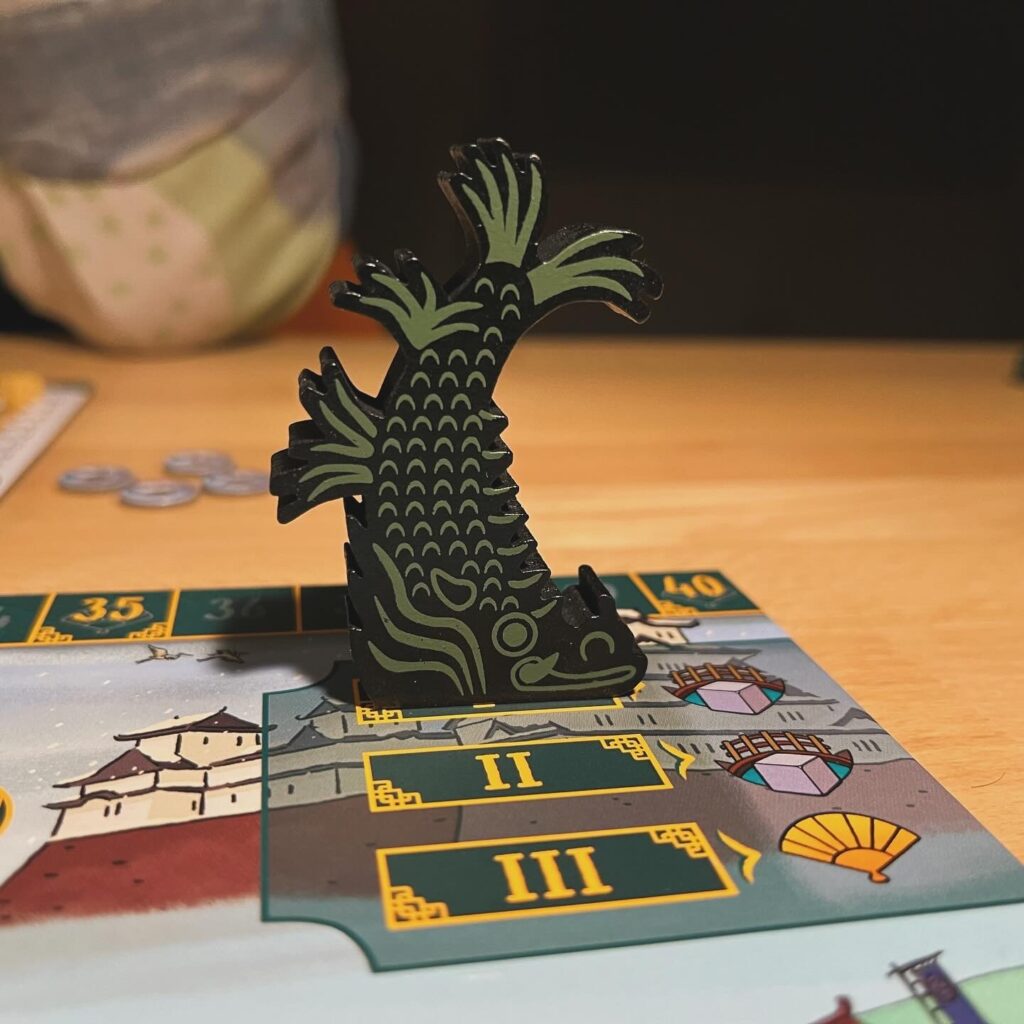
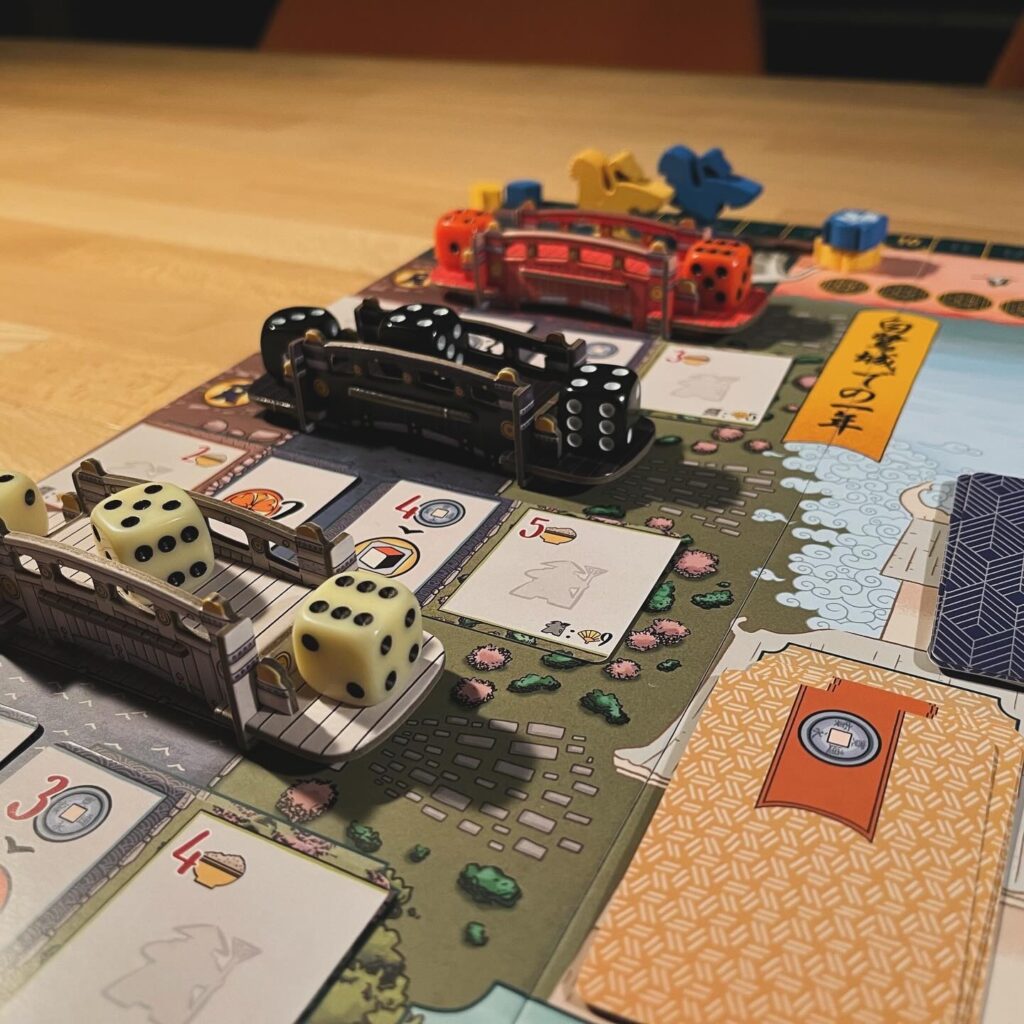
Players choose and use one of the available dice each turn. Dice can be used by players in several ways. Players can place the dice at various locations on the game board or in their “personal domain” (as in their personal player board). The places where players can place dice indicate the value of dice needed and the color for which action(s). Because different tiles are placed for color dice at the beginning of the game, during each game it varies which actions a die can activate, as well as the amount of actions you can perform with a die. Indeed, sometimes there are two actions for a particular color, making the selection of dice very dynamic.
Players can pay the difference in value in coins to still be able to perform an action with a lower die value and get change if they use a die with a higher value than needed. In a game with more than two players, players can stack a second die on top of a previously placed die, but that previously placed die is the new value that players must meet. If players select the die with the lowest value on a bridge, they also activate a lantern action: this activates a number of bonuses in their personal domain.
The Dice allow players to collect resources, coins and seals, earn victory points, activate the lantern of their personal domain and place their workers on the game board. By placing workers, players can collect personal action cards from the board by sending courtiers to the castle, place samurai in fields for one-time bonus actions and place peasants for actions activated at the end of a round. By placing these various courtiers, players also accumulate points. Courtiers score points depending on their position in the castle, samurai score points depending on type of training field along with the amount of courtiers in the castle and farmers score points depending on the cards where they have been placed.
By moving courtiers around the castle, players can “appropriate” the action cards lying on the board. They take the corresponding card and place it on their personal domain. They move the action card already lying her to their lantern set, as there is a lantern bonus on the back of each action card. The new action card may be activated immediately, allowing players to perform all white actions for free. The new card also determines which actions players can perform on their personal domain. The personal domain has space for three dice (each color appears once) and players can use each die to collect resources and other bonuses indicated on their player board as well as perform the relevant action from the action card. Each time players place samurai, courtiers or peasants an additional resource/bonus may appear on their personal board. On the player board there is a so-called lantern track. Each time a player activates a lantern action, they get all the bonuses displayed. Each time they appropriate a new action card, they also get an additional bonus. This allows players to tie delightful combinations of actions and bonuses together.
Verdict
The White Castle is a game full of choices and combinations, requiring you to carefully consider the various options to put together the right strategy and tactics. Stringing together multiple actions and bonuses is quite satisfying. The gameplay itself is streamlined and elegant. Despite having a huge range of choices, the actions are intuitive and clear and because each player can only use three dice each round and the game ends after 3 rounds, players need to make the right choices. The different actions and consequences are logical, making the game complex not because of the game play, but because of the emphasis on the high level of tactical insight that can bring you victory. Because of the varied game design and the different action cards and tiles, the game is also incredibly replayable. Combine the above with the beautiful design and compact packaging makes this game a must have as far as I’m concerned.
